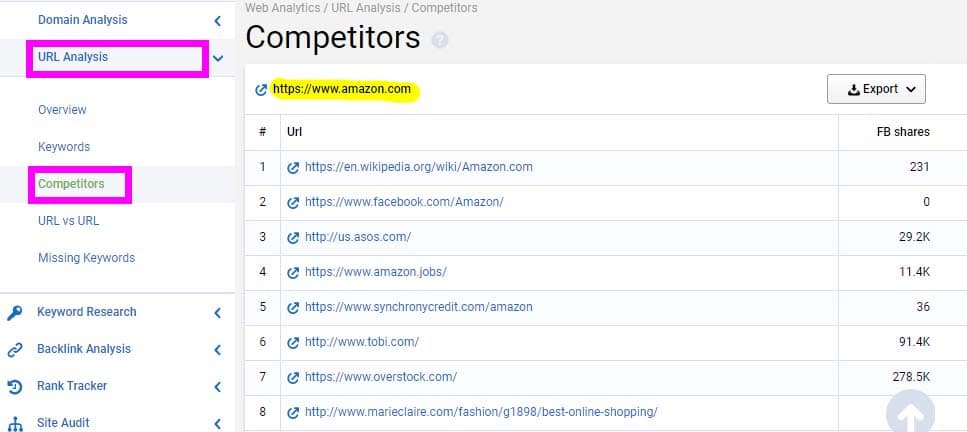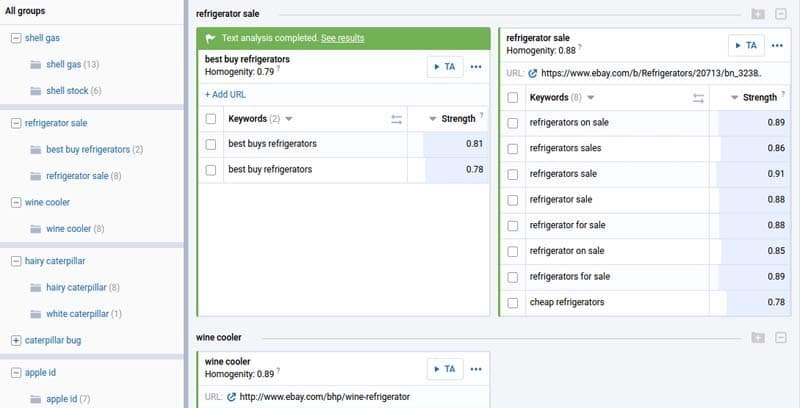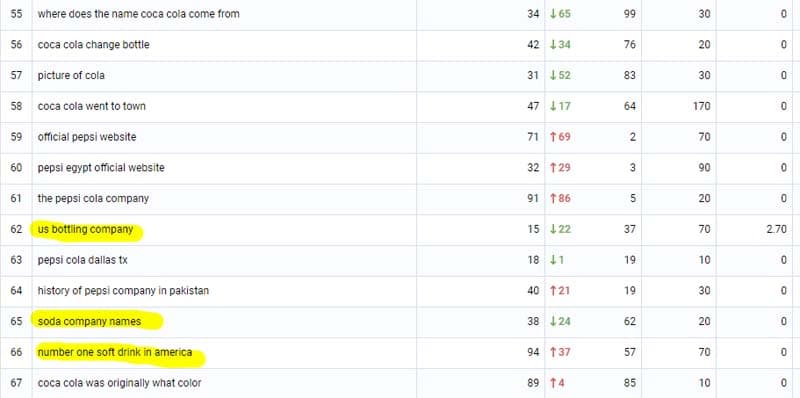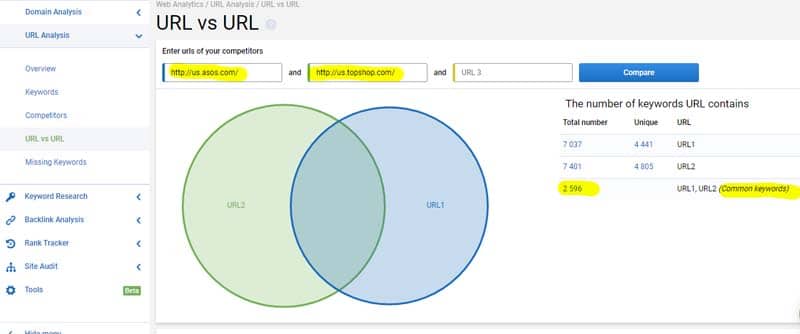By doing a proper competitor analysis, you can learn from others’ experiences and mistakes.
Keywords are just one of the many things to explore about your rivals, but they’re certainly something to start with.
Keyword research is the foundation of search engine optimization. But creating your keyword strategy without keeping an eye on your competitors is just playing blindly.
Competitor analysis is needed in any of these cases:
- you are just launching a website and want to research your niche, competitors and the demand.
- your did some paid promotions, but ROI suddenly dropped and you need to find out why you are behind your competitors.
- you are successful and firmly standing on your feet, but want to understand current trends.
Questions you can answer through competitor analysis :
- How many and which keywords should I target?
- Which of them will be the most effective?
- Which keywords have I missed?
- Which keywords are my competitors targeting?
- How much do they spend on PPC?
In Brian Dean’s guide to keyword research, you’ll find everything you need to know about the importance of keywords in SEO and some keyword research basics.
1. Knowing your competitors gives you confidence
First of all, you will want to take a look around to understand what is happening in the market. Of course, this can not be done by just typing your keywords in Google.
Who are your competitors? These are the sites who rank for the same keywords and target the same audience as you.
Type in your site’s url in Serpstat’s Competitor Analysis tool, and here they are ready to be explored.
You can choose between 13 databases in 13 regions, so there is a possibility to find competitors for each country.
Your rivals might be extra difficult to beat. Simply knowing this doesn’t make it any easier, but at least you know what to expect and can calculate your risks.
Click on each to see what keywords they rank for. Most of them will work for you as well.
You can manually edit the competitor’s list by adding or removing competitors.
Click on Change the List of Competitors box, enter a new competitor or remove an existing one.
2. You will easily find missing keywords
To start, most SEOs Google’s Keyword Planner or Keyword Tool to find keywords for their websites.
When it seems like you have already found as many as you can, it’s time to see how your direct organic competitors approached this.
Go to Missing Keywords n URL analysis.
Missing keywords are phrases that your competitors rank for in top 100 but which are not present on your domain.
Now you can change this and fill this “gap”.
But don’t simply copy all the keywords you’ll find in this list.
Depending on the search volume (in the second column) and competition strength (third), you can pick those that are worth targeting.
This usually means there will be the balance between how popular a keyword is and how difficult it is going to be to rank for in the top 5.
Grouping Keywords
Keywords grouping or clustering is a promising keyword research technique that can keep you one step ahead of competitors.
Keyword grouping is dividing keywords into different semantically related groups or clusters.
In simple words, if two words are likely to appear on the same page at the same time or in the same text, they will be likely to appear in one cluster.
Keywords clustering helps your optimization in many ways. First of all using groups of keyword increase exposure, click-through rates, conversions and lowers PPC price.
Since the Google Hummingbird update in 2015, SEOs started to pay attention not only on a keyword itself but also on context and topics.
In 2017, just putting your keyword all around the page won’t most definitely do.
As Google becomes more “intelligent”, it shows more theme-related results rather than pages with an exact same keyword.
If Google now concentrates on context, so should we. But that doesn’t mean we have to abandon keywords.
The perfect strategy is to combine two approaches – old-school (keyword-concentrated) and new-school (topics and context).
Clustering keywords is what really helps to shift our focus of keywords and turn to topics.
Think of this as a word association game. Every keyword is a path to many other keywords.
So you have already found plenty of keywords.
But optimizing each web page for only one or two keywords is not a good thing to do.
Now it’s time to break them into groups.
After keyword research, the clustering tool will divide keywords into small semantically related groups.
Then they should be spread across pages of the website to achieve higher rankings in the search engine results.
When attempting to rank for a whole group of keywords instead of a single one, you can optimize your pages to target not a single keyword but a whole group.
How are those keywords relevant to each other?
There are not simply synonyms!
But you will often find synonyms in a common cluster.
Serpstat will automatically create groups for your list of keywords, which you can modify, update and edit.
Go to Tools, choose Keywords grouping and load your keywords.
3. You will know objectively how good you are
When comparing your rankings with your rivals’ rankings, you need to see the full picture.
If you compare rankings for just a couple of keywords, the information you’ll get may be completely misleading.
Let’s get a list of all the keywords you and your Competitor X both rank for.
Go to SEO Research -> Domain vs Domain.
Here you can add two of your competitors at once to compare a number of keywords and the visibility of your and your rival’s domain.
There will be some high-volume phrases and if you manage to rank higher than your competitors for them, that will give you a big advantage.
Here are the common keywords.
I highlighted some keywords, which are not the most important, but it’s interesting to see how Pepsi and Coca Cola rankings vary.
As you see, these keywords don’t bring much traffic.
In this example, both domains have nearly the same amount of keywords. But the rankings for some of the mutual keywords vary dramatically.
That’s a completely different scenario from the Pepsi and Coca-Cola situation (just take a look at Volume and Competition in PPC columns).
4. You’ll Save Money on PPC
Even if you are not running a PPC campaign, analyzing competitors’ ads can bring you tons of information.
If someone targets a keyword in PPC, that means it has a potential to bring in a lot of traffic.
Go to PPC Research and choose Ad Examples/Competitors/Keywords, depending on what you would like to explore.
I advise to sort keywords by Cost Per Click and explore starting from the cheapest.
Here you may find some keywords that are cheap but still can bring traffic.
To summarize
- Identify your direct organic competitors
- Discover your competitors’ keyword rankings
- Compare the rankings, visibility and a number of keywords
- Find missing keywords
- Find your PPC competitors
- Find competitors for a certain keyword
- Group your keywords to rank for a certain number of phrases at once
- Investigate traffic drops and visibility changes for the competitor’s domain you are interested in
- See if your campaign is going in the right direction.









